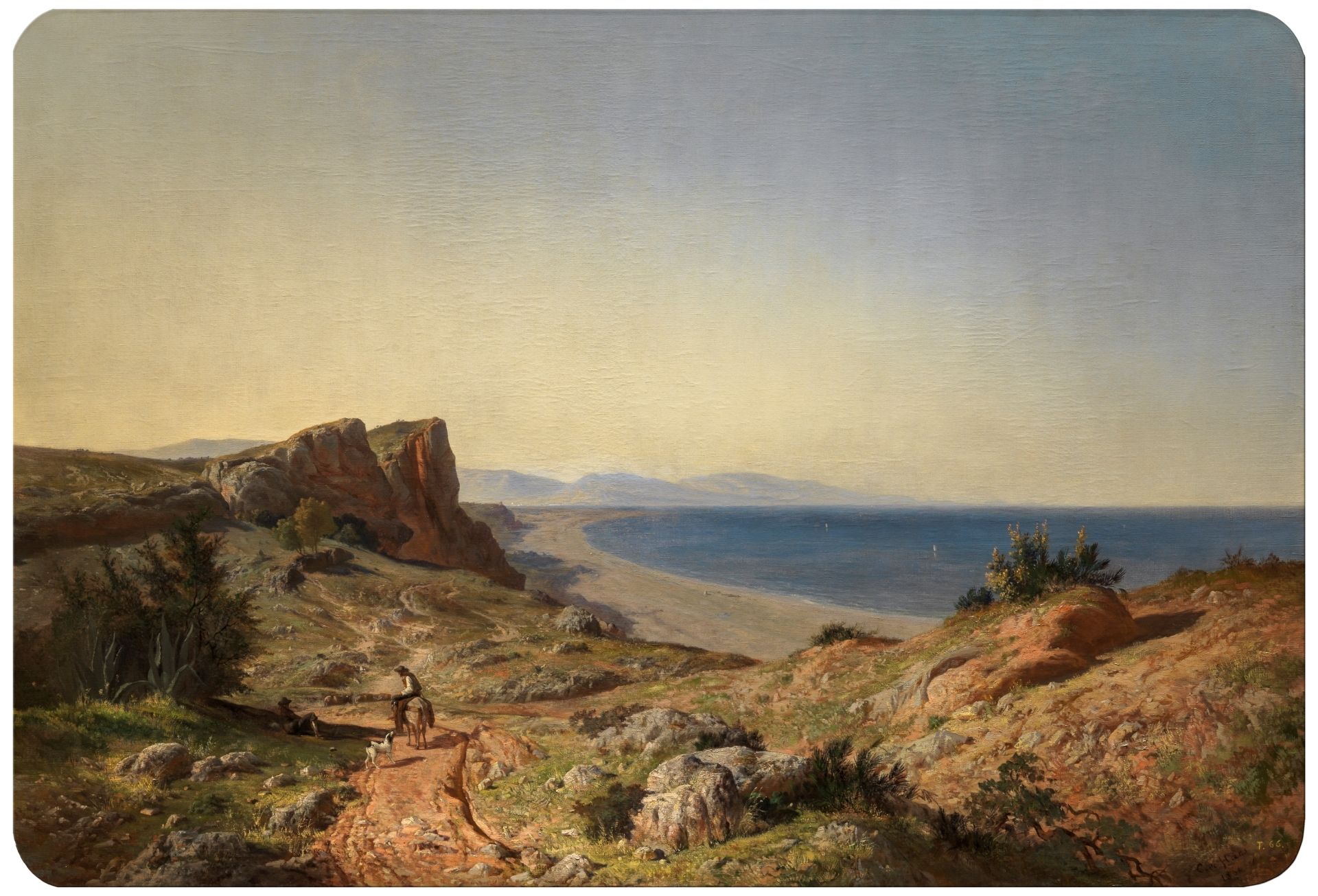On a hillside, covered with temperate vegetation, and on a stony path intensely lit by the sun, a peasant rides on the back of a mule. In the shade of some bushes, another villager rests, his dog whipping the donkey. Above them, two prominent mounds rise out into the bay, where tiny sailing boats can be seen in the water, and on the beach, stranded boats and tiny tents around which children frolic. In the background, there is a path along which several people walk. A mountain chain diluted in the coastal haze shelters a village and outlines the horizon against a clear, glowing sky that darkens into orange and sepia tones as it approaches the foreground.
The broad perspective, the parallel focus of light that guides us in converging lines towards the horizon, the earthy, golden tonality that envelops the atmosphere of a sunset, the use of tiny elements to humanise the landscape, etc., evoke late-Romanesque compositions, very common in Haes at this early stage of his oeuvre and still somewhat distant from the realism and veracity that would guide his artistic career. The extensive and descriptive title itself, in which the term “recollection” is present, reflects the lexicon of the time to define a type of painting in which the expressive charge of the word itself plays an important role in the expression of a work, often amalgamating similar elements that make up different compositions, thus contradictorily distancing himself from the realist ideology he established for the landscape genre in his Entrance Speech to the Academy – which he read in February 1860 – and which would form the theoretical basis of all his painting.
The painting was submitted, along with three other landscapes, to the National Exhibition of Fine Arts in 1860, winning a first medal. Critics were not unanimous with the jury’s verdict, highlighting Haes’s mastery and technical skill as the dominant feature, together with a certain degree of repetition in his compositions and themes, proving once again that Haes’s painting was always the point of reference for the most controversial opinions of both his supporters and his detractors.



